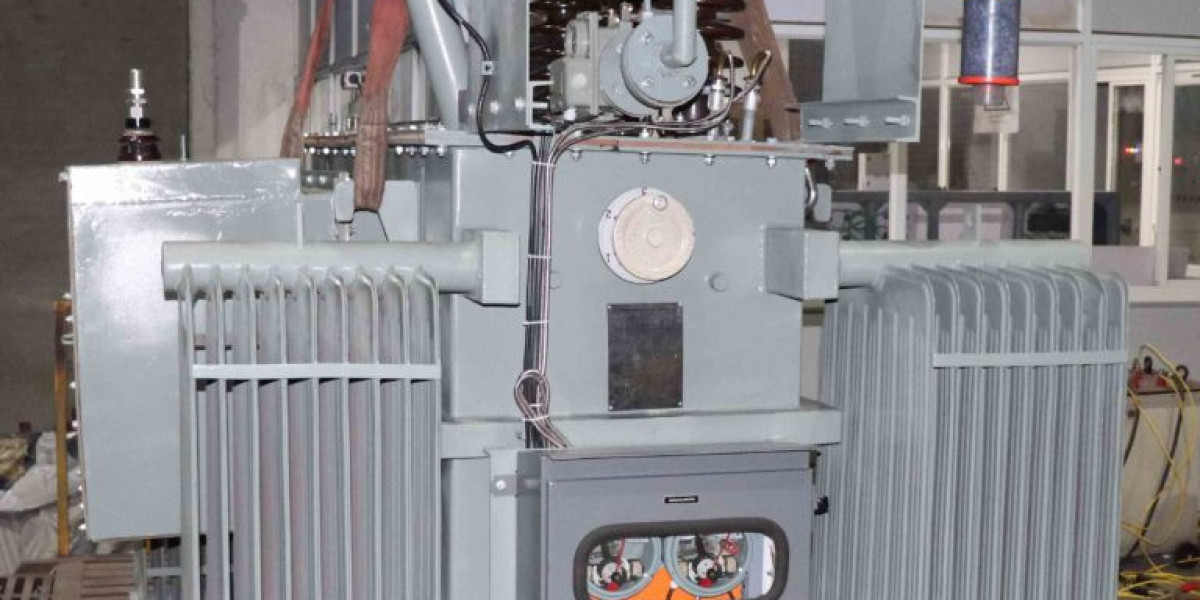Introduction to Transformers
Transformers are essential electrical devices used to transfer electrical energy between circuits through electromagnetic induction. They play a crucial role in power transmission, distribution, and industrial applications. By altering voltage levels, transformers improve efficiency, reduce energy losses, and enhance the safety of electrical systems. This article explores different types of transformers, including distribution transformers, three-phase transformers, furnace transformers, and power transformers, along with their functions and applications.
What is a Transformer?
A transformer is an electrical device that uses electromagnetic induction to transfer electrical energy from one circuit to another. It consists of primary and secondary windings wrapped around a magnetic core. When an alternating current (AC) flows through the primary winding, it creates a changing magnetic field that induces a voltage in the secondary winding. This process allows the transformer to step up (increase) or step down (decrease) voltage levels as needed.
Basic Components of a Transformer
Core – Usually made of laminated silicon steel to minimize energy losses due to eddy currents.
Windings – Coils of insulated wire, typically copper or aluminum, that carry the electrical current.
Insulation – Ensures electrical isolation between windings and prevents short circuits.
Cooling System – Uses air, oil, or water to dissipate heat generated during operation.
Types of Transformers
1. Distribution Transformers
Definition & Function: Distribution transformers are used to step down the voltage from transmission lines to a level suitable for residential, commercial, and industrial use. They are usually placed near end-users to ensure an efficient power supply.
Key Features:
Operates at lower voltage levels (11kV, 6.6kV, or 400/230V)
Designed for continuous operation
Oil-immersed or dry-type insulation for cooling and safety
Applications:
Power distribution in urban and rural areas
Industrial facilities and manufacturing plants
Public infrastructure such as hospitals, schools, and street lighting
2. Three-Phase Transformers
Definition & Function: A three-phase transformer is used in electrical grids and industrial settings to manage three-phase power transmission efficiently. It consists of three sets of primary and secondary windings, often housed in a single core.
Key Features:
High efficiency in power transmission
Reduces losses in long-distance electrical transmission
Can operate in delta or star configurations
Applications:
Large industrial plants and manufacturing units
Power transmission over long distances
Electrical substations
3. Furnace Transformers
Definition & Function: Furnace transformers are specialized transformers designed to provide power to electric arc furnaces (EAFs) and induction furnaces used in metal refining and smelting industries.
Key Features:
Capable of handling high currents and voltage fluctuations
Designed for rugged environments with high heat and dust levels
Equipped with on-load tap changers for voltage regulation
Applications:
Steel and metal manufacturing plants
Foundries and recycling industries
Glass and cement industries
4. Power Transformers
Definition & Function: Power transformers are used in transmission networks to step up or step down voltage levels, facilitating efficient power transfer over long distances.
Key Features:
Operates at high voltage levels (above 33kV)
Large capacity (ranging from 5 MVA to several hundred MVA)
Requires robust cooling systems (oil-immersed or forced air cooling)
Applications:
Power generation plants
Electrical substations
Interconnecting transmission networks
Importance of Transformers in Modern Electrical Systems
Transformers are crucial for the efficiency and stability of electrical grids. They help in:
Voltage Regulation: Ensuring voltage levels are suitable for different applications.
Energy Efficiency: Reducing losses during transmission and distribution.
Safety Enhancement: Preventing electrical hazards by controlling voltage levels.
Industrial Operations: Powering machinery and equipment in various industries.
Conclusion
Transformers play a fundamental role in electrical power systems, ensuring efficient energy transfer from generation to consumption. Different types of transformers, including distribution transformers, three-phase transformers, furnace transformers, and power transformers, serve distinct purposes in residential, commercial, and industrial applications. Understanding their functions and characteristics helps optimize their use for better energy management and operational efficiency.
By selecting the appropriate transformer type for a given application, industries and power utilities can enhance energy efficiency, reduce operational costs, and ensure a stable power supply. As technology advances, transformer designs continue to improve, offering better performance and reliability in modern electrical networks.








